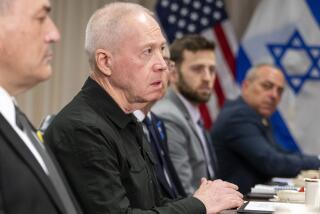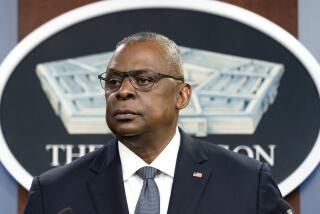Obama asks military for options
WASHINGTON — President Obama has asked the Pentagon’s top generals to provide him with more options for troop levels in Afghanistan, two U.S. officials said late Friday, with one adding that some of the alternatives would allow Obama to send fewer new troops than the 40,000 reportedly requested by his top commander.
Obama met with the Joint Chiefs of Staff at the White House on Friday, holding a 90-minute discussion that centered on the strain on the force after eight years of war in two countries.
The meeting -- the first of its kind with the chiefs of the Navy, Army, Marines and Air Force, who were not part of the president’s war council meetings on Afghanistan in recent weeks -- prompted Obama to request another such meeting before he announces a decision on sending new troops, the officials said.
The military chiefs have been largely supportive of a resource request by Army Gen. Stanley A. McChrystal, the top U.S. and allied commander in Afghanistan, that would by one Pentagon estimate require the deployment of 44,000 additional troops. But opinion among members of Obama’s national security team is divided, and he now appears to be seeking a compromise solution that would satisfy both his military and civilian advisors.
Obama is expected to receive several options from the Pentagon about troop levels next week, said the two officials, who discussed the deliberations on condition of anonymity because they are not authorized to speak publicly.
Before Obama can determine troop levels, his advisors have said, he must decide whether to embrace a strategy focused heavily on counterinsurgency, which would require additional forces to protect population centers, or one that makes counter-terrorism the main focus of U.S. efforts in the country, which would rely on relatively fewer American troops.
In meeting with the military chiefs, Obama heard their assessment of how prepared the services are to handle a new commitment.
“Each chief discussed the state of their own service, how they are doing today and what the long-term consequences will be for each of their services,” an administration official said. The military advisors also put the troop deployments in the context of the rest of their global deployments, including Iraq.
More to Read
Get the L.A. Times Politics newsletter
Deeply reported insights into legislation, politics and policy from Sacramento, Washington and beyond. In your inbox three times per week.
You may occasionally receive promotional content from the Los Angeles Times.










